STUDENTS PROJECTS
PROJECTS2013
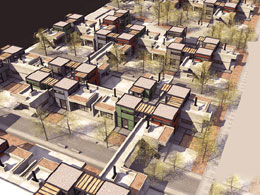
21 June, 2014
Radical reconstruction of Roma settlement in Komotini
The social inclusion via housing re-establishment.
Student: Tsatlidoy Martha
Supervising professors: Patrikios Giorgos, Kokkoris Panagiotis, Thomas Nikos
Democritus University of Thrace
Date of presentation: 07-11-2013
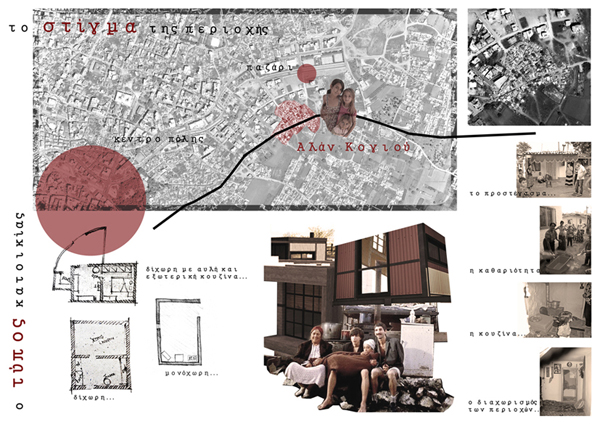
The main aim of this diploma project is an effort to approach the significant issue of the integration of particular social groups in local society via the architectural and urban planning.
More concretely, at the end of Adrianoypoleos street in Komotini, very close to the city center and in contact with the urban web is located the gypsy district of Alan Kogioy with population of about 700 individuals, roughly 207 families. The district was created after a devastating flood in 1961, when a group of Roma living in the city center, were resettled in the particular region. However, with the extension of urban fabric, the city confronted a major social problem. The only attempt in helping to solve the problem, concerns the creation of new settlement away from the city, but remains unfinished.
The relation with the city
The settlement "Alan Kogioy" is located to the north-eastern side of the city, very close to the administrative and commercial centre while notably important for the residents is the street market that is carried out in the same region and constitutes the main occupation of Roma.
Current conditions
The sight of region does not differ from a classic slum. Compact and low building, building blocks randomly placed leave narrow paths to serve the access of the pedestrians and shabby materials such as metal sheets and wooden boards describe the settlements sight. Adrianoypoleos street is the only thoroughfare connecting the area with the city, constituting a central point for Roma and prohibitive passage for the other residents of the city.
The issues of daily living are many and significant. The settlement has no sewer system and the water supply system is problematic. Houses lack basic facilities such as kitchen and toilets serve several families.
Because of the social alienation and the occupational exclusion violence, criminality and social racism infest the region.
Analysis of the type of residence
The study conducted in the houses of settlement showed that there is one type of residence. This type is usually composed of two small spaces that communicate and assemble all facilities. The first one serves the day uses while in several cases the same space serves also the basic kitchen facilities. The second one constitutes space of sleep.
Therefore, we could distinguish that there is a free type of residence and a cohabitation of many individuals in small spaces which is not only observed in the level of unit but also in the entire settlement. This mainly constitutes an attitude toward life and a conception of privacy. One more important observation that influenced the solution is the particular relation of Roma with the ground and the nature.
Fundamental objectives:
1. To preserve the social character of the settlement.
2. Social inclusion.
3. Planning with respect to the culture of the residents.
4. Low cost manufacture.
Choosing the proper place
Aiming the social integration of Roma in the society of Komotini, seemed as more suitable the choice of the current region occupying at the same time a wider area. In this decision contributed 3 components.
1. The street market as a commercial connection with the settlement.
2. The relation with the city center
3. Adrianoypoleos street as centre of the settlement could constitute one more urban connection.
First ideas for the type of residence
Level settings to 0,40m.
Loft for plain segregations of areas.
Attribution of vitality on the second floor.
Direct relationship between the interior and exterior space.
Main axes of urban planning
1. Pedestrisnization of Adrianoypoleos street at the section that crosses the settlement, in order to create an axis walkover and connect the social uses.
2. Extension of the street market to a vertical axis and consolidation with the central square.
3. Smaller walkways between the rows of houses serve the traffic of vehicles for the access in the plots while producing social space.
The final suggestion
The final result of the diploma project regards to the urban planning of a region 93,986 m2 which is constituted by 207 plots for residential use, a building of social services, a school and central square with commercial services.
The individual plots 170m2 are constituted by a two-storied house building 80m2 and courtyard. The spaces of ground floor are differentiated only with configurations of levels per 0.40m. Loft maintains optical contact with the ground floor. The housing unit is repeated creating a row of houses wobbling between public and private space. At the same time a route on the second floor with direct access from the loft gives life and use to this level.
The central fireplace, the simplicity of internal planning, the position of openings and the optical escapes arise from the study of the everyday routine of Roma.
The materials refer to the particular social group wobbling at the same time between permanent and temporary.
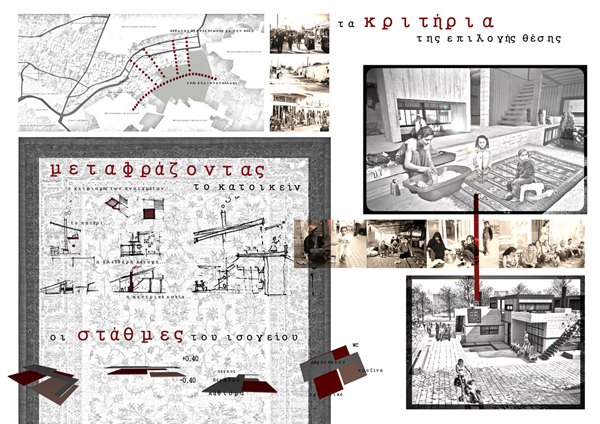
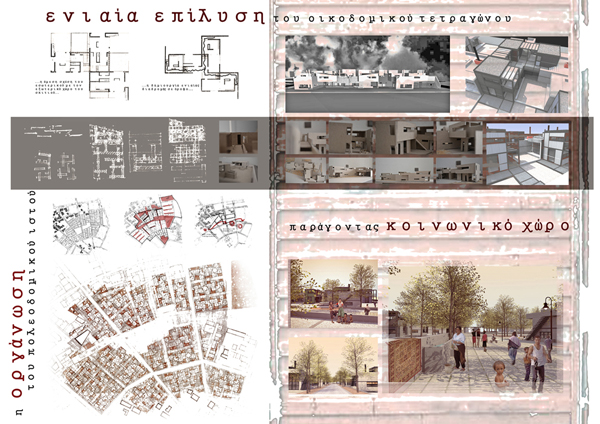
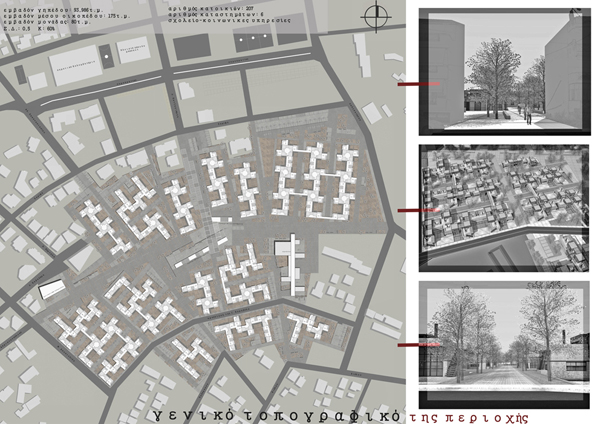
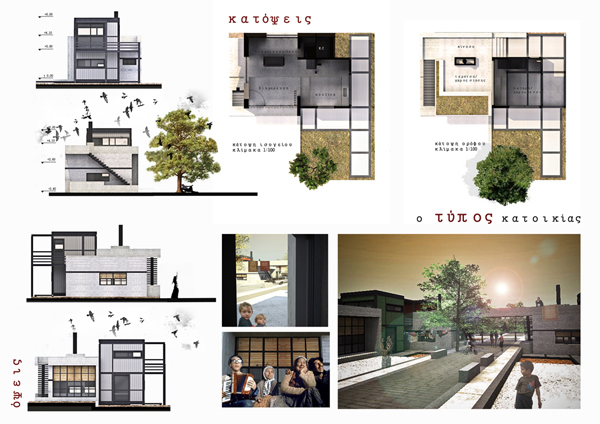
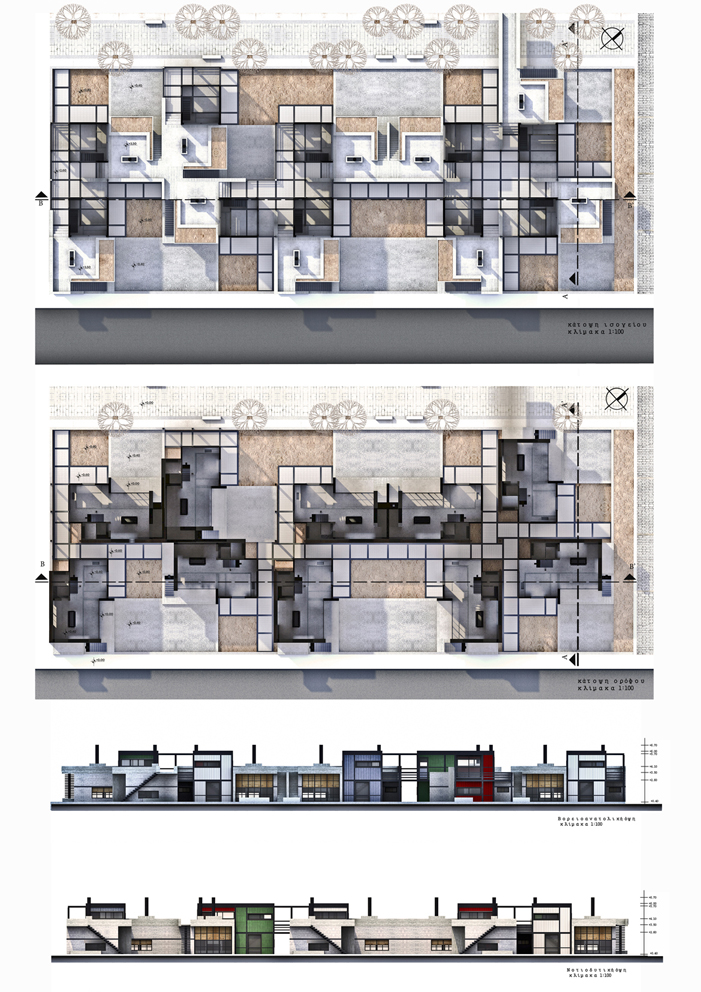
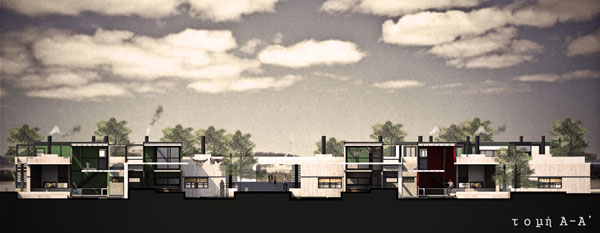
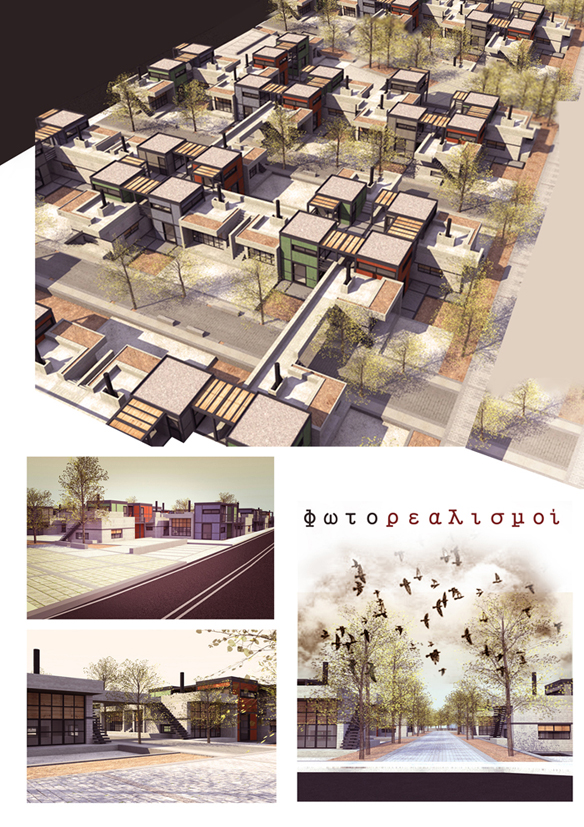
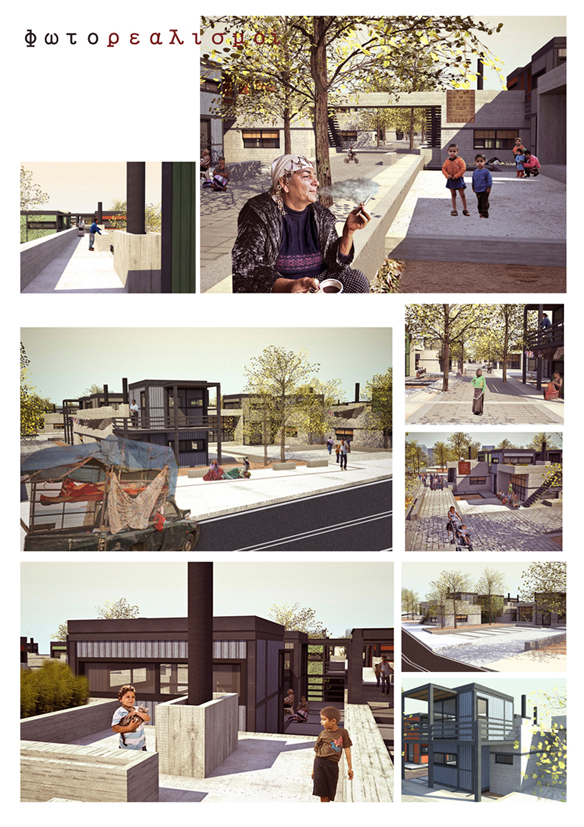
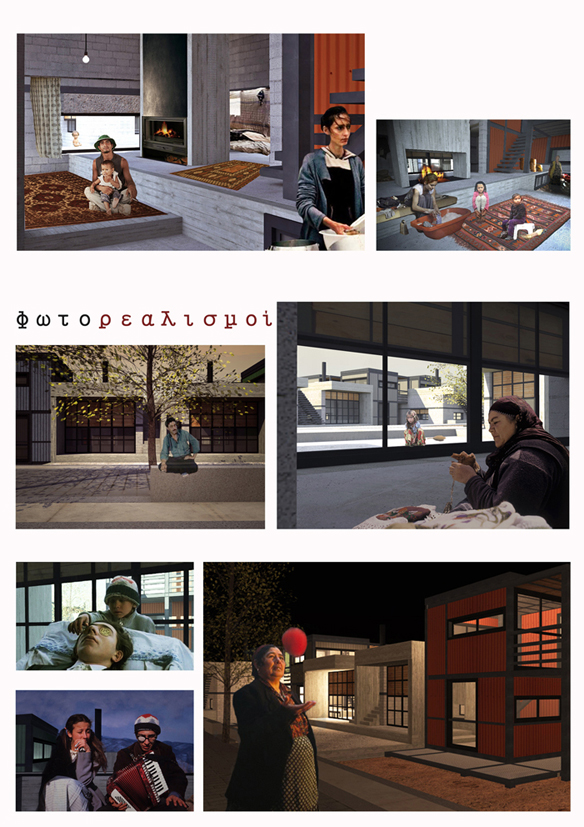
Related articles:
- Suburban Railway Station. Urban regeneration in Rouf, Athens, Greece ( 21 January, 2013 )










